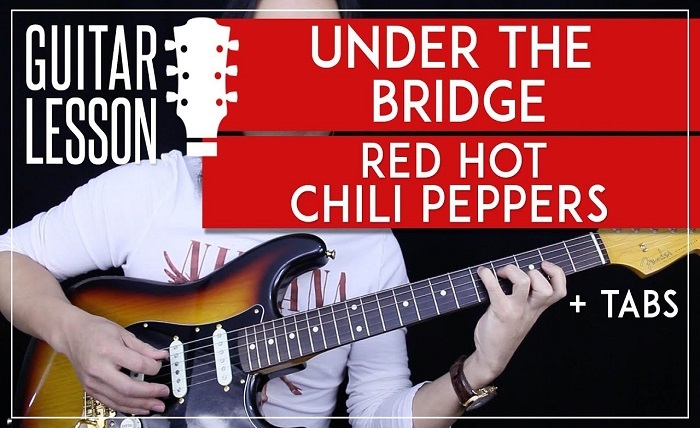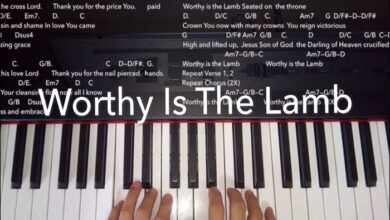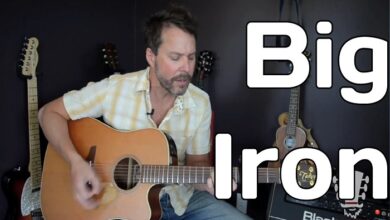How to Play “Under the Bridge” by Red Hot Chili Peppers on Guitar

“Under the Bridge” is one of the most popular songs by the American rock band Red Hot Chili Peppers. It was released in 1992 as the second single from their fifth album, Blood Sugar Sex Magik. The song is a ballad that expresses the singer’s feelings of loneliness and alienation in Los Angeles, and his connection to the city and its people. The song also features a distinctive guitar riff and a chorus that uses a capella vocals.
If you want to learn how to play “Under the Bridge” on guitar, you will need to know some basic chords, strumming patterns, and techniques. In this article, we will show you how to play the song in two different ways: with a capo on the fourth fret, and without a capo. We will also provide some tips and tricks to make your playing sound more authentic and expressive.
Playing with a Capo
A capo is a device that clamps onto the neck of the guitar and shortens the strings, changing their pitch. By using a capo, you can play songs in different keys without changing the chord shapes. This can make some songs easier to play, especially if they use chords that are difficult to finger or involve a lot of barre chords.
To play “Under the Bridge” with a capo, you will need to place it on the fourth fret of your guitar. This means that the chords you play will sound four semitones higher than they look. For example, if you play a C chord with a capo on the fourth fret, it will sound like an E chord.
The chords you will need to play “Under the Bridge” with a capo are:
[Intro] D F# x4 [Verse 1] E B Sometimes I feel like C#m G#m A I don't have a partner E B Sometimes I feel like C#m A My only friend E B Is the city I live in C#m G#m A The city of angels? E B Lonely as I am C#m A Emaj7 Together we cry [Verse 2] E B I drive on her streets 'cause C#m G#m A She's my companion E B I walk through her hills 'cause C#m A She knows who I am E B She sees my good deeds and C#m G#m A She kisses me windy E B I never worry, C#m A Emaj7 Now that is a lie [Chorus] F#m E I don't ever want to feel B/F# F#m Like I did that day E Take me to the place I love B/F# F#m Take me all the way F#m E I don't ever want to feel B/F# F#m Like I did that day E Take me to the place I love B/F# F#m Take me all the way [Interlude] E B C#m G#m A E B C#m A [Verse 3] E B It's hard to believe that C#m G#m A There's nobody out there E B It's hard to believe that C#m A I'm all alone E B At least I have her love C#m G#m A The city, she loves me E B Lonely as I am C#m A Emaj7 Together we cry [Chorus] F#m E I don't ever want to feel B/F# F#m Like I did that day E Take me to the place I love B/F# F#m Take me all the way F#m E I don't ever want to feel B/F# F#m Like I did that day E Take me to the place I love B/F# F#m Take me all the way [Interlude] A Am7 G6 Fmaj7 -ay, yeah Yeah, yeah A Am7 G6 Fmaj7 Oh no, no, no Yeah, yeah A Am7 G6 Fmaj7 Love me, I say Yeah, yeah Fmaj7 E7 Gmaj7 One time [Coda] A C Under the bridge downtown G6 Fmaj7 Is where I drew some blood
You can find the chord diagrams for these chords here.
The song consists of four main parts: the intro, the verse, the chorus, and the bridge. The intro is played four times, alternating between Bb and D chords. The verse is played twice, using C, G, Am, Em, and F chords. The chorus is played four times, using Dm, C, G, and Dm chords. The bridge is played once, using F, Ab, Eb, Db, F, Ab, Eb, Db, F chords.
The strumming pattern for the intro and the verse is:
1 & 2 & 3 & 4 &
D D U D U D U
The strumming pattern for the chorus is:
1 & 2 & 3 & 4 & 5 & 6 & 7 & 8 &
D D U D U D U D D U D U D U
The strumming pattern for the bridge is:
1 & 2 & 3 & 4 &
D D U D U
You can find the tablature for “Under the Bridge” with a capo here.
Playing without a Capo
If you don’t have a capo or prefer not to use one, you can still play “Under the Bridge” on guitar. However, you will need to use different chord shapes and fingerings than with a capo. You will also need to tune your guitar down by one semitone (Eb Ab Db Gb Bb Eb) to match the original recording.
The chords you will need to play “Under the Bridge” without a capo are:
- E: 022100
- B: x24442
- C#m: x46654
- G#m: 466444
- A: x02220
- Emaj7: x79897
- F#m: 244222
- B/F#: x24422
- Am7: x02010
- G6: 320000
- Fmaj7: x33210
- E7: 020100
- Gmaj7: 320002
You can find the chord diagrams for these chords here.
The song structure is the same as with a capo, but with different chords. The intro is played four times, alternating between E and B chords. The verse is played twice, using E, B, C#m, G#m, A chords. The chorus is played four times, using F#m, E, B/F#, F#m chords. The bridge is played once, using A, Am7, G6, Fmaj7, A, Am7, G6, Fmaj7, Fmaj7, E7, Gmaj7, C chords.
The strumming patterns are the same as with a capo, but you may need to adjust your hand position and pressure to avoid unwanted string noise or buzzing.
You can find the tablature for “Under the Bridge” without a capo [here].
Tips and Tricks
To make your playing sound more like the original song, you can try some of these tips and tricks:
- Use a clean or slightly overdriven tone on your guitar amp or pedal. Avoid using too much distortion or effects that can mask the clarity of the chords and notes.
- Add some palm muting to your strumming to create a more rhythmic and percussive sound. To do this, lightly rest the side of your picking hand on the strings near the bridge of the guitar and strum as normal. You can vary the amount of pressure and the position of your hand to change the sound.
- Add some hammer-ons and pull-offs to your chord changes to create a more fluid and expressive sound. To do this, pluck a string and then quickly press or release another finger on the same string to change the note without plucking again. For example, you can play a C chord and then hammer-on your pinky finger on the third fret of the high E string to create a Cadd9 chord.
- Add some embellishments and variations to your chords to make them more interesting and colorful. For example, you can play an Emaj7 chord and then slide your index finger up one fret to create an Emaj9 chord. You can also play an F#m chord and then lift your index finger off the low E string to create an F#m7 chord.
- Listen to the original song and try to mimic the timing, dynamics, and feel of the guitar part. Pay attention to how the guitar interacts with the vocals, drums, bass, and other instruments. Try to play along with the song or use a backing track to practice.
Conclusion
“Under the Bridge” is a great song to learn on guitar, whether you use a capo or not. It has a simple but catchy melody, a memorable chorus, and a beautiful bridge. It also uses some common chords and strumming patterns that you can apply to other songs. By following this article, you should be able to play “Under the Bridge” on guitar in no time. Have fun and keep practicing!
Read more about: kokoa-tv




